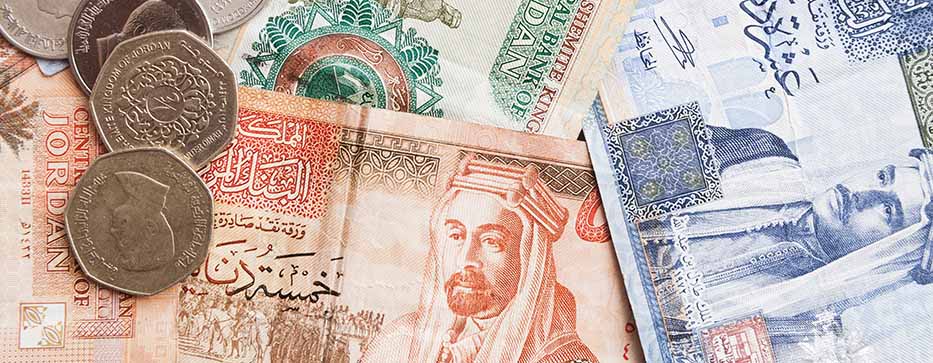Knowing what the currency of Jordan is and its equivalence is essential in any trip to this country: even if you book many services in advance or pay mostly by card, you will see that the prices in Jordan They are mainly expressed in the local currency, of course. Therefore, we have compiled all the information you need to know about the day-to-day economy in the country: ATMs, cost of living, level of generalization of bank cards, etc.
The currency of Jordan is the Jordanian dinar or dinar, which is usually written in abbreviated form as JD (symbol) or JOD (ISO code). It has been the country’s currency since 1949, a few years after formalizing its independence from the British Empire. At present, it serves as a form of payment also in the West Bank.
For a tourist it can be difficult to handle coins in Jordan because the amounts are not only expressed in Jordanian dinars, but also in their subdivisions: dirhams, qirsh (or piastres) and fils.
At the everyday level, it is usual to indicate the amounts without specifying whether we are talking about dinars, piastres or fils, since it is assumed that it is understood by the context.
These are the Jordanian dinars and qirsh/piastres that you can have in your hand:

Or put another way:
Of course, these values can fluctuate on a daily basis, so we recommend checking the exact exchange rate of the Jordanian dinar before your trip. The values expressed below correspond to the month of September 2022.
To exchange money into Jordanian currency, you can:
If you decide to get Jordanian currency Before traveling, in your place of origin, go to your bank branch and request it well in advance, as this procedure can take several days. Check the conditions at your bank, as this service is usually reserved for customers. On the amount to change, you decide how much, since there are no limitations on the amount of money that a traveler can carry with him.
Both banks and exchange offices charge similar fees and are located in strategic places, such as airports or land border crossings. However, hotels may charge a much higher rate.
The opening hours of bank branches may vary according to the region, although approximately it can be from 8.00 to 15.00, from Sunday to Thursday. The exchange offices can have a longer schedule and in line with the commercial, that is, opening in the afternoons.
A quick fix during and out of those hours is to operate at ATMs. There are many scattered around the country, both in large cities and in urban areas of tourist destinations, and the main brands of credit cards (Visa and Mastercard) are accepted. Of course: find out well the prices for operating with a card at ATMs, since it can be much more expensive than doing it in person at the branch or at an exchange office.
Having said all this, you will also be interested to know that many currencies are accepted in Jordan.. That is, if you don’t have Jordanian dinars at the time, you should have no problem paying in dollars, euros and other major international currencies. Some of the foreign currencies most present in Jordan are the Lebanese pound, the Egyptian pound and the Israeli shekel. Therefore, it will be easy for you to exchange these currencies in Amman. In Aqaba it is also easy to exchange Egyptian pounds and Israeli shekels.
If you don’t carry bills or coins , in Jordan You can pay for most tourist services by card, since its use is widespread. At least in shops, in restaurants of a certain level and in other establishments of interest to tourists. In any case, you will probably find it cheaper to pay in cash, since sometimes a commission is added for each operation.
Due to a multiplicity of factors (political, health, economic, etc.), prices in Jordan tend to vary considerably from year to year, with inflation rates that may be high one year but negative the next.
In any case, in general and taking data from the reference portal Numbeo, it can be said that the cost of living in Jordan is in the middle range within the countries of the Middle East. For example, it is roughly similar to that of neighboring Saudi Arabia, considerably higher than nearby Egypt but lower than Lebanon and considerably lower than Israel.
If we compare the prices of Jordan with those of some Western and Latin American countries, the results are mixed: the comparison indicates that the cost of living is similar to that of Spain, somewhat higher than that of Mexico and much higher than that of other Latin American countries such as Chile, Argentina or Colombia.
Fill out the form below to receive a free non-binding quote tailor-made by a specialized agency in Jordan.
DMC travel agency specializing in tailor-made trips to Jordan
Mandala Tours, S.L, NIF: B51037471
License: C.I.AN-187782-3
Hello!
Contact one of our travel advisors for commercial assistance.
